To develop a successful business with a loyal and dedicated customer base, you have to know how your audience feels about your brand. Not just how many social mentions you have, but the sentiment or emotion behind those mentions.
Social media sentiment analysis helps businesses extract vital information about the number of consumers who express positive, negative, or neutral emotions towards the brand on social media.
71% of customers tell their friends and family about brands that have given them a positive experience. And for 86% of customers, an excellent experience turns one-time buyers into brand advocates. These statistics prove how crucial it is to understand your audience’s emotions toward your brand and to deliver a fantastic customer experience.
With such in-depth knowledge, you can turn happy customers into evangelist brand advocates and improve your strategies and products to solve the pain points of unhappy buyers, for higher sales, and better customer retention, loyalty and satisfaction.
So, how do you accurately conduct social media sentiment analysis?
How do you aggregate and analyze thousands of mentions across multiple social platforms? What tools do you need for this strategy, and how do you leverage such valuable analytics?
If it sounds like an impossibly huge task, don’t worry, where here to put you on the right track!
In this guide, we explore what social media sentiment analysis is, the top social media sentiment strategies, and how to perform a Facebook social sentiment analysis.
Plus, we have some real-life examples of social media sentiment reports and how this approach has boosted real businesses!
Ready?
Here we go!
Social media sentiment analysis is a process to evaluate your buyers’ emotions behind brand mentions. Increased brand mentions don’t accurately show how your audience feels about you. While you might get hundreds of brand mentions, it doesn’t mean your buyers adore your products.
With social media sentiment analysis, you can analyze what proportion of customers feel positive, neutral, or negative toward your brand. This valuable data allows you to identify your shortcomings and make changes accordingly. Of course, customers could be raving about your business. Social media sentiment analysis will make it possible to take customer experience to a whole new level.
Manually checking each brand mention or interaction takes too much time and lacks in-depth analytics like social media sentiment analysis. You should still monitor social customer interactions. But integrate social media sentiment analysis for a robust interpretation of how customers feel about your brand and products.
Now you know about social media sentiment analysis. Let’s look at how to conduct this method to grow an exceptional online reputation.
Source: GOSO.io
Summary: What is Social Media Sentiment?
Social media sentiment is a process to extract, prepare and evaluate data from your target audience. This process reflects on how customers feel about your brand, not only what they say.
There are 6 ways to conduct proper social media sentiment analysis. Successful social media sentiment analysis relies on using all of these approaches.
It’s not optional to use any of the best social media sentiment analysis tools, this is standard if you want an accurate and robust analysis.
When you use a social media sentiment analysis tool, this is pretty much how you can view social sentiment data:
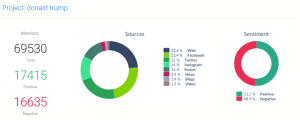
Here are the top 3 social media sentiment analysis tools for accurate data:
MentionLyrics will give you everything you need to know about what your audience thinks about you, your competitors, and keywords. This tool monitors sentiment on social media and websites. You can scan and evaluate your mentions on various social platforms like Twitter, Facebook, LinkedIn, Reddit, and Instagram.
You can install MentionLyrics on your computer and register an account to use this tool. Plus, MentionLyrics is 100% free and a HootSuite app! So, Hootsuite members can assign and respond to mentions from their Hootsuite dashboard.
Critical Mention evaluates your mentions from online media publications like news, blogs and reviews. If your business relies heavily on publications Critical Mention can help you.
You can also use this tool to track your mentions on TV and radio. Let’s say you get an excellent mention during a live broadcast. Critical Mention will have real-time data on the broadcast.
Besides tracking your social reputation on TV and online publications, you can monitor your data on social media and podcasts too. To use Critical Mention, you can request a custom quote.
Brandwatch does as the name implies – it watches your brand. And what’s exceptional about this tool is that it evaluates images associated with your business. So, if you want to check if customers have mentioned your logo, Brandwatch can pull those results for you.
This social media sentiment analysis tool has one of the world’s largest customer opinions and trends archives. With all this data at your fingertips, you can make smarter, data-driven decisions custom to your audience. Businesses can do more too. You can manage team workflows and marketing campaigns.
Contact Brandwatch for a custom quote to get started with this tool.
To understand how your audience feels about you, start by evaluating changing customer trends and insights. Your buyers’ needs and demands change over time. These changes affect how they feel about your business.
If you don’t adapt to these ever-changing trends, you can’t deliver what buyers want.
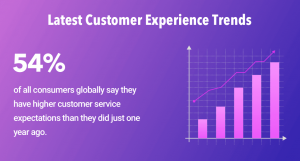
When businesses consider changing customer trends, they must evaluate how external factors from the physical environment around them shape customer patterns.
For example, KPMG outlines four world events that influence customer patterns and buying trends. From this report, customers lost economic balance during Covid-19. They believed corporations didn’t understand the economic impact on them. The erosion of brand trust and buyers wanting more localization also influenced buying decisions.
By paying attention to how the world around them influences your customers’ purchasing trends, you can adapt your business to stay aligned with their needs.
Your primary goal is to keep your customers happy and customer appreciation rising. The secret to this is giving them what they expect and need.
If you’re unsure how external factors influence your customers, ask them. Use polls and surveys to determine how buyers feel about your brand’s response to world events.
Evaluate the most recent 6 months to 2 years of this data. Wider data ranges are better for bigger and more established companies. Look at data regarding external customer buying, and consider these factors:
Besides how your customers’ buying trends have changed, consider how they’ve felt about your brand over time. If you’ve never performed a social media sentiment analysis, you don’t have a solid idea of how buyers have felt about your brand before vs. now.
Your social sentiment analyzer tool will help you gather this data. You can follow the steps we provide below for Facebook sentiment analysis to determine buyers’ emotions toward your business over time.
From this data, understand:
Buyers care about customer experience and support.
Short of 90% of customers would leave a brand after just 2 negative experiences. And US buyers tell an average of 15 people about bad customer support.
If you don’t provide excellent customer experience and support, your buyers won’t have positive feelings toward your brand. You could have thousands of buyers, but without providing them with fantastic customer support and brand experience, they won’t have much to merit you on.
With top-tier, speedy customer-centric support, buyers will notice how much your business appreciates them. And this makes it possible for customers to associate your brand with an excellent experience that evoked positive emotions.
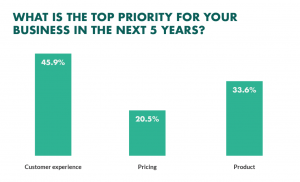
Understand your audience through social sentiment analysis before deciding how to change customer care and experience. It’s vital to do this, so you can make informed choices to optimize customer support and brand experience.
If you notice repeated phrases like “delayed responses” or “rude customer service agents”, pin down about three or four of these phrases. Ensure you deploy measures to solve these pain points and reduce negative customer experiences for improved social sentiment.
After employing new strategies, search for these terms in your social sentiment analysis to determine if customers still experience these issues.
You may also notice buyers are asking the same questions on social media. With this knowledge, you can reconsider how your customer agents relay information, and you can update your FAQ page.
Doing this can add to a fantastic customer experience and support because buyers can easily access the resources and materials.
How your audience feels about you vs. your competitor matters to gain the leading edge. You can spy on your competitors with a social sentiment analyzer tool.
Here are a few of the best competitor sentiment analysis tools:
By using these tools, you can use your competitor’s sentiment analysis to your advantage.
Audiences differ across social media channels. But evaluating how your customers feel on all these channels gives you a broader range of aspects to consider. You’re not relying on one channel to measure your social sentiment. You can understand it from various angles, across a range of audience segments and demographics.
If you only use one social media platform, now you have the motivation to create a presence on others. Evaluate what your audience says about you on different platforms, and find ways to improve your business based on buyer reviews.
Summary: 6 Ways to Do Social Media Sentiment Analysis
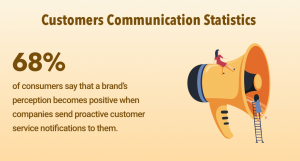
You know how to use social media sentiment analysis. Let’s see how some brands have used it in action.
You’d be surprised how many major brands aren’t as beloved as it seems. Take a study by IOP Science, for example. Nike and Adidas are global brands but are they loved? These researchers evaluated the social media sentiment on Twitter for both footwear giants.
To perform this study, analysts used social media sentiment Python-oriented analyzer, Tweepy. First, they collected all the data, like the keywords “Nike” and “Adidas”.
Then they removed all duplicate tweets and reformed slang spellings like “loooovveee” to love. The study found that Nike has a positive reputation among less than 25% of its audience, while Addidas scored slightly over 27%.
They evaluated the negative reviews and used word bubbles to group words for Adidas and Nike. Common terms associated with negative reviews from buyers for both brands include Gucci, utility, and gang.
By using social media sentiment analysis for Adidas vs. Nike, the study concluded:
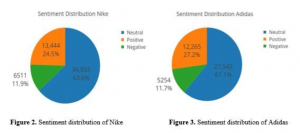
This study proves that social media sentiment analysis can help you leverage robust audience insights. You may assume your buyers are happier with your business than they are.
Sentiment analysis for airline carriers is vital because customers trust these brands with their safety. Emerald took a closer look into how social crises on Twitter affect airlines.
This study used two features to measure audience emotion, valence, and arousal. And the purpose of doing this research was to provide airlines with the data to approach social media crises in the future.
From this study, the findings were:
Social media sentiment is a valuable strategy for businesses in all sectors. Thanks to performing social sentiment analysis, these airlines have the resources to maintain a positive brand reputation and reduce the impact of bad PR.
A client of ProductLead wanted to find the best influencers for their influencer marketing campaign.
But how do they choose the best influencers that align with their audience?
Well, they integrated social media sentiment analysis into their process to find the perfect influencers.
Using social sentiment analysis, ProductLead evaluated data for each potential influencer, like:
To visualize and compare each influencer’s social sentiment, ProductLead created an intuitive graph. They also took a step further and created a “motivational map” for influencers.
This map evaluated the influencers’ presence based on three motivations- vitality, power and recognition.
What’s essential to take away from this social media sentiment analysis is how ProductLead used this strategy in two different ways.
By using social sentiment analysis, ProductLead found:
There are only three simple steps in performing Facebook sentiment analysis: gathering data, preparing data, and analyzing data. You’ll need a social media analyzer tool for performing Facebook sentiment analysis. You can either use any of the best software we outlined above, or the tools we’ll discuss next!
To start your social media sentiment analysis process, gather data from Facebook. You can collect data from your Facebook pages through methods like using:
Unfortunately, you can’t do this manually. You have to use a dedicated tool. Like the tools we mentioned above for conducting social media sentiment analysis, many of these tools rely on artificial intelligence, Python, or machine learning.
Let’s explore some of the top tools for gathering Facebook data!
Sequentum is a web scraping tool allowing you to extract data from any web page. You can export data as a CSV file. After this, you can upload the CSV file to your social media sentiment analyzer tool, and gain the customer insights you need.

Zapier is a popular choice for extracting data because of the wide variety of app integrations. How Zapier works is pretty simple – you extract data from one platform and export it to another. But to start this process, you should first integrate Zapier into your social media sentiment analyzer.
After you’ve done this, you can gather and export your social media sentiment data in only one step!

Heard of ScrapeStorm? This tool allows businesses to extract data from any web page, using a URL only. To get started with this AI-powered web scraping tool, you can register an account and use the web app or download this tool.
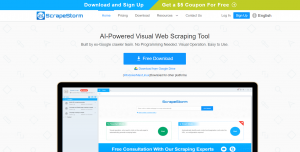
After using your chosen tool to gather the Facebook data you need, it’s time to prepare this data. You need to remove the “junk”. These are unnecessary words, incorrect grammar, URLs, and special characters. It’s vital to remove this unstructured data, so you can accurately analyze what matters.
And what’s fantastic is your Facebook sentiment analyzer tool will automatically prepare audience data for you. So, you don’t need to worry about manually removing this unstructured data.
Here’s an example of how many different keywords a social sentiment analyzer tool can find. Notice there aren’t any unwanted and incorrect words, special characters, or URLs because this tool has removed all of that.
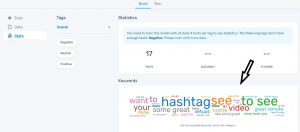
If your social media analyzer includes “junk” words, ensure you manually remove these phrases from your keywords. However, if you don’t do this, your social media analyzer will assume those are the terms you want to analyze.
After preparing your audience data, it’s time to analyze it to determine how your audience feels about your brand. Once again, you need a social media analyzer for this process.
Businesses with established social media sentiment analysis campaigns and highly targeted keywords take a more expert approach. Rather than relying on pre-built machine learning and AI models from standard social media analyzer tools (like all the ones we’ve discussed), they create their own models to extract and evaluate highly targeted keywords and data.
But you don’t have to worry about doing this for now. It’s best to get familiar with performing Facebook social sentiment analysis first.
You can understand how your audience feels and, in turn, have a complete idea of what keywords to target. At this stage, you can train your own models, making preparing and analyzing audience data more accurate and custom to your business.
For whichever method you choose, your analyzer will automatically show your results from the analysis. From this data, you can determine which percentage of your audience regards your brand positively, negatively, or neutrally.
After analyzing your Facebook data, put what you’ve learned into practice. Consider aspects like:
After analyzing your Facebook data, create strategies based on the above factors. Don’t forget to evaluate these strategies to determine what works for your business and buyers.
Summary: Performing Facebook Sentiment Analysis
To perform Facebook sentiment analysis, use these steps:
Social media sentiment analysis helps businesses understand how customers feel about their brand. With this data, you can personalize your marketing approaches and modify your product to improve customer satisfaction. You don’t know how your customers feel about your brand unless you analyze buyer sentiment. Even brand’s like Nike and Adidas don’t have all positive impressions.
To conduct social media sentiment analysis, start by choosing the best social sentiment analyzer tools. Be strategic and monitor audience trends while figuring out how to improve customer service. Use social media sentiment analysis on various social channels for a wider range of quality data.
Social media sentiment is the way your customers feel about your brand. Rather than focusing on what customers are saying about your brand, you can evaluate whether customers feel positive, negative or neutral toward you. Read the full article to find out how to use social media sentiment analysis, examples and the best use cases.
To conduct social media sentiment analysis, start by finding the best sentiment analyzer tools and monitor your audience trends over time. Brand's must evaluate customer sentiment changes over time and improve customer support. Read this article for more details on use social media sentiment analysis and the top examples.
To do Facebook sentiment analysis, start by gathering audience data with tools like Zapier or ScrapeStorm. Then you need to prepare this data to make it easier to use for social media sentiment analysis. Read the article to find out the last step to use social media sentiment analysis for Facebook, and other top methods to use this data evaluation process.
Khoros: Must-know customer service statistics of 2022 (so far)
Oberlo: 10 Social Media Statistics You Need to Know in 2021
Emplifi: Report: 11 key things consumers expect from their brand experiences today
IOP Science: Twitter Sentiment Analysis: A Case Study for Apparel Brands